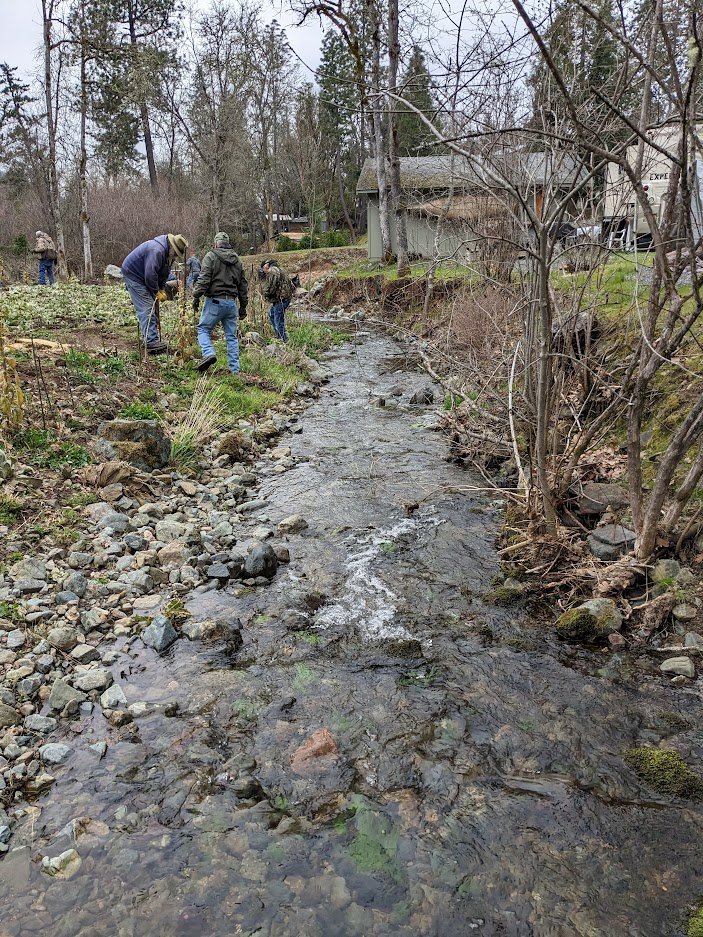Planting for Success! Plant Native Species in Fall or Late Winter/Early Spring
Trickle, trickle. Splash, splash!
Cold, clear water is vital to the survival of native salmonids and other aquatic species in our local streams and the Rogue River. Local restoration practitioners incorporate multiple strategies to improve water quality and stream temperature including restoring stream banks with native trees and shrubs in this area called the riparian zone. Well-established native trees and shrubs hold soil in place preventing erosion and contributing to healthy stream banks. Providing shade cover, reducing stream temperature, and supplying habitat and food for animals and birds are among the benefits of trees and shrubs.
Water in streams in early spring may look pristine and well-suited for salmonids and other fish and aquatic species. However, water quality declines as outside temperatures warm moving into summer, and flows in streams begin to diminish as rain, snowmelt, and spring flows are reduced. In addition, water in the region is used for irrigating residential lawns and agriculture, which also reduces the amount of flow. Stream temperatures are higher in areas lacking a healthy, diverse riparian cover. What can we do to help? Plant native riparian trees and shrubs!
Native planting occurring along Bear Creek tributaries. Credit: RVCOG
Timing is critical for the successful planting of native trees and plant species. If they are planted too late or too early in the season, they will be impacted by the extreme heat and drought conditions we see annually. As a result, we recommend planting in the fall (ideally), or in late winter or early spring.
Examples of suitable riparian trees and shrubs include, but are not limited to:
• Big Leaf Maple (Acer macrophyllum)
• Oregon Ash (Fraxinus latifolia)
• Chokecherry (Prunus virginiana)
• Pacific Willow (Salix lucida)
• Hawthorn (Crataegus, spp.)
• Oregon Grape (Mahonia aquifolium)
• Pacific Ninebark (Physocarpus capitatus)
• Douglas Spirea (Spiraea douglasii)
• Ponderosa Pine (Pinus ponderosa)
These plants and others comprise the list of frequently planted species along Bear Creek. Recommendations and species lists can be found at www.bearcreekrestoration.org/restoration-values, www.stream-smart.com/stream-and-river-restoration/, or by contacting Bear Creek Restoration Initiative (BCRI) members.
BCRI members have been using many of the species in the Bear Creek Watershed before and following the devastating Almeda Fire. Well-established native riparian trees and shrubs do not burn as hot as invasive species like the Himalayan blackberry during a wildfire. In addition, we have seen fires in restored and managed areas (e.g., The Freshwater Trust project in Talent) during the Almeda Fire keep to the ground instead of moving into the canopy. As a result, defensible space was easier to maintain, and the fires were easier to control and extinguish.
Overall, planting for success means planting native species, and planting in fall, or in late winter, or early spring!
Blog post author: Rogue Valley Council of Governments

